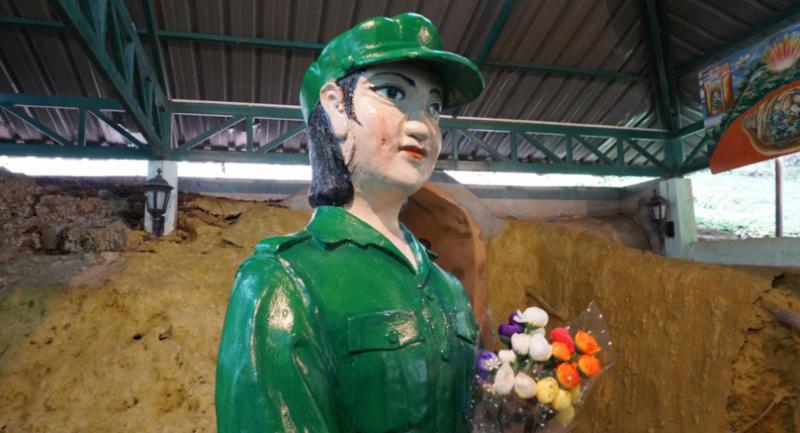Digging deep for safety

Piyamit tunnel just outside Betong once provided a perfect hiding place for members of the Communist Party
I’ve never thought of myself as particularly claustrophobic but I find myself shivering as I squeeze through a small opening in the earth. The feeling doesn’t entirely vanish as I emerge into a dim and cold cave but I cheer myself up by imagining that I’m in a wine cellar and surrounded by casks and bottles of vintage wine. A plaque on the wall reads “Sleep Place” so perhaps it’s a hobbit hole. But there are no hobbits here, only many retired comrades.
The Piyamit Tunnel just outside Betong was dug in 1977 by members of the Malaya Communist Party in Yala to serve as a bomb shelter and a place to store supplies. Communism was rife back in the 1970s when the Americans retreated from the Vietnam War, with comrades filling the ranks of the anti-government parties across Thailand. Search and destroy raids were frequent and the communists quickly learned how to play hide and seek.
“This tunnel is a kind of secret hideout,” says the village headman, who has undertaken to show us around the tunnel.
Today Piyamit Tunnel is a reminder of the underground movement and resistance. It’s also a tourist destination, drawing visitors to this Southern province to walking through this man-made cave beneath the forest. At one end is a restaurant frequented by durian-loving Malaysian tourists. It also serves beer.
Inspired by Cu Chi Tunnel in Southern Vietnam, Piyamit Tunnel is little more than an underground passage. While the famous Viet Cong’s tunnel stretches around 200 kilometres under a labyrinth of subterranean villages, the Thai edition is just one kilometre long. On the other hands, with widths varying between 1.2 and 1.8 metres, it’s luxurious compared to the Cu Chi, which is no wider than the shoulders.


Of course, there are many things to see above ground too. The communist’s base camp is perched on the slope of the mountain. Follow the trails under the canopy and you’ll soon come across a Chinese shrine and Buddhist temple. I find that strange. Aren’t communists supposed to be atheists?
And then there is a stove named after Kongming – a Chinese strategist during the Three Kingdoms period.
“The Kongming stove is smokeless. It kept us safe from the eyes of the soldiers,” says the guide. “We would send the smoke from the burning chamber through the tunnel then release it into a wet filter.”
The anti-Communism battle ended in 1980 with a peace agreement. The communists gave up their arms and kept quiet about their beliefs, choosing instead to focus on community and country development. The communist villages were later renamed “Piyamit”, meaning a good friend.

Visitors can talk to the former communists over plates of durian and bottles of beer to hear what life was like during the 1970s and why Communism didn’t work here.
There are some fascinating stories to be heard.
IF YOU GO
+ Piyamit Tunnel is 25 kilometres north of Betong, Yala province.
+ Betong is Thailand’s southernmost district. The easiest way to reach it is by air to Hat Yai’s Songkhla province then a passenger van, which travels through the far north of Malaysia to avoid the insurgency.
Watch the video at www.NationMultimedia.com.
